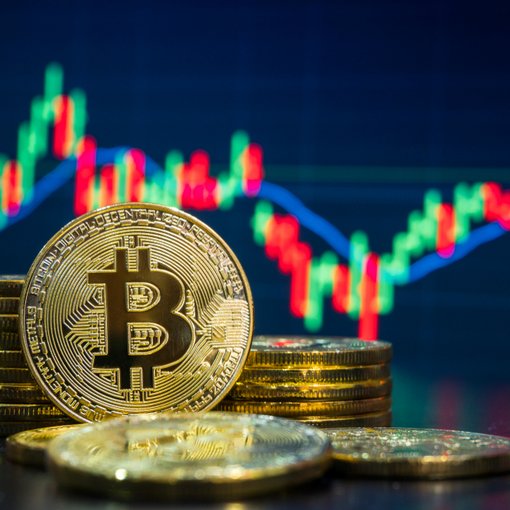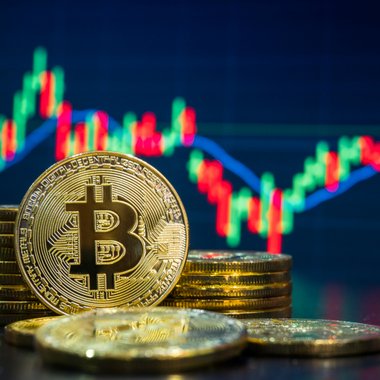
- Five minutes read
Generation crypto
One in four crypto holders aged 18-24 in the U.K. and in the U.S. consider crypto their main job or income stream. And for one in two, it’s a weekly habit. New study explores the views of young crypto investors.
This article is for information and solely educational purposes. It is not intended to be financial, investment or trading advice. This article does not protect against any financial loss, risk or fraud.
During the pandemic, for many young people a lot more time indoors was spent looking at diversifying their financial portfolio, which has meant that crypto-trading has become an unexpected, additional source of income.
However, as we have seen with recent events, certain assets are too good to be true in terms of their returns and research to validate claims of returns and risk in Decentralised Finance (DeFi) platforms is vital before investing. With so much misinformation around, it is important to look at the crypto behaviors of young people, how they are buying crypto and why, so that we can be better as an industry in educating and informing young consumers.
To do this, we wanted to get an accurate insight into young crypto holders’ true thoughts, feelings and behaviors around crypto. So, we commissioned independent* research into the habits and sentiments of 2,000 crypto holders in the USA and 1,000 in the UK.
This research was undertaken in June of this year, during the crypto downturn, to get an accurate view of what crypto holders were thinking during the period of volatility.
It revealed that a quarter (25%) of 18-24-year-old crypto owners consider trading cryptocurrency their main job or income stream, with over half (55%) buying or selling crypto either once a day or once a week.
This shows the huge importance of crypto among young people, even in the face of a market downturn and highlights the role of cryptocurrencies across the financial portfolios of young investors.
On the one hand, this points to a promising future for crypto, with the soon-to-be next generation of leaders and regulators becoming more crypto-conscious than ever before. However, with the increased importance of crypto among younger generations comes a need to regulate and educate in order to safeguard and raise awareness about risk.
It is essential that any consumers investing in crypto seek out service providers who comply with all current regulation, and while we are confident in crypto playing a major role in the future of finance, they should ultimately only invest what they can afford to risk.
Why are young people buying crypto?
Our study not only looked at how young people are using crypto but also why they bought it in the first place.
We found that a third (33%) of 18-24-year-old crypto holders first bought crypto to actively trade as an investment and 18% first purchased as a hedge against inflation.
The research also discovered that 83% of these young people indicate that they would continue to hold some or all of their crypto even if it doubled in value over the next year, suggesting that crypto may be seen as a long-term investment by this demographic.
Where are they keeping their crypto?
We found that the majority (39%)** of 18-24-year-old crypto owners are mainly keeping their crypto in digital wallets and have huge confidence in the future of crypto for payments. 62% of 18-24-year-old owners say they believe that cryptocurrencies are the future of payments, with 61% agreeing that crypto is the future of banking.
This shows that crypto, for young people, is not only a financial investment, but also an investment in the future of retail, with digital wallets the primary method of holding on to this developing asset.
Despite this, 61% admitted they have lost money on crypto, further emphasising the need for quality education that can inform younger consumers about the potential risks and help to keep them safe.
However, this generation is also open about the potential downsides of investment. While 69% of these young crypto owners feel comfortable in telling their partners about their holdings, 84% would tell their partners or closest friends if they lost money as a result of their crypto activity.
Openness is vital and should be encouraged across the board, not only to encourage greater financial transparency, but also to raise awareness about the risks of investment, be it in crypto or elsewhere.
What next?
As young people start their journey through the financial system with such diverse portfolios and a confluence of factors deciding their investment, there are encouraging signs for the financial literacy of future generations.
However, with the recent rises in inflation and interest rates, and taking into account general market instability, young people are under increased strain to make financial decisions.
It is therefore vital for the industry as a whole to support and inform decision-making through education and a display of comprehensive compliance, to support this generation in their ambitions.
*Survey methodology
The research, which gathered responses from 3,000 cryptocurrency holders – 2,000 in the US and 1,000 in the UK, was conducted online by Sapio Research between 8 - 14 June 2022 using an email invitation and an online survey. At an overall level, results are accurate to ± 1.8% at 95% confidence limits, assuming a result of 50%.
**The study shows 39% of 18-24-year-old crypto owners keep their crypto in an eWallet, vs 27% on an exchange, 14% in a multi-crypto wallet, 12% in a cold/paper wallet, 7% in a hardware wallet and 1% other.




